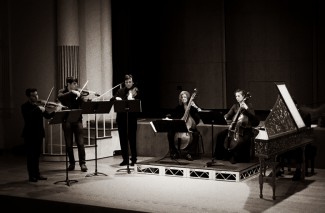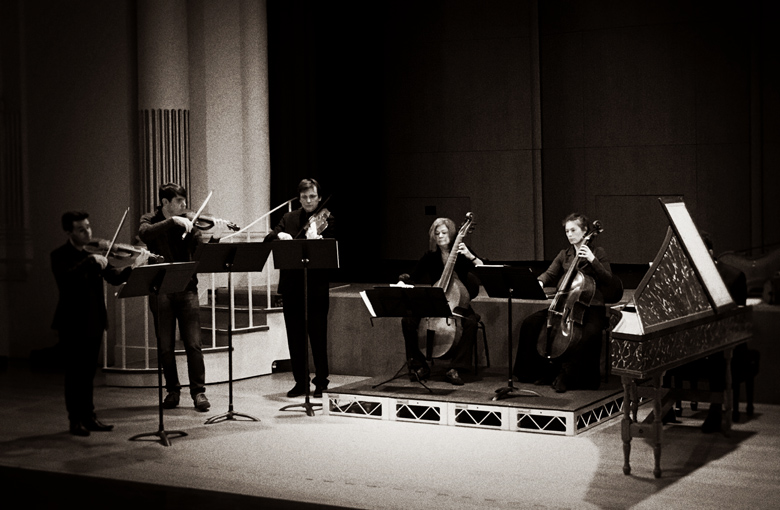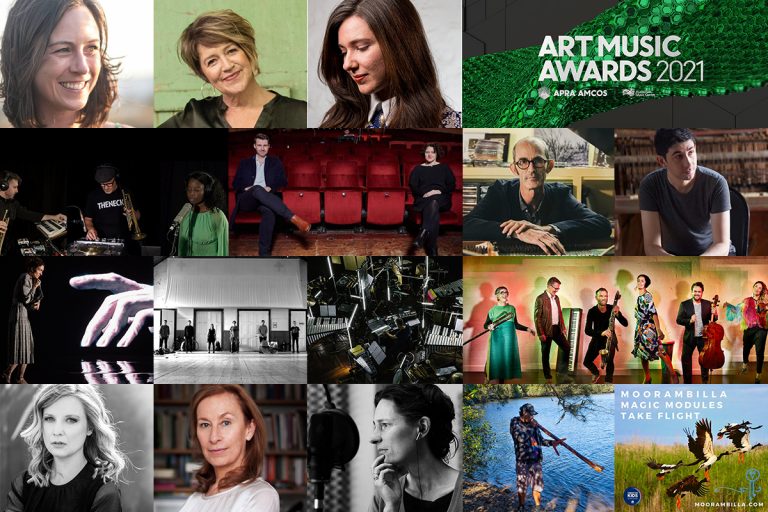Concert Review: Marais meets Muffat

Marais meets Muffat
The Independent Theatre, North Sydney
July 16, 2017
Written by Ria Andriani
Through the dialogue of two ensembles, the Marais Project and Muffat Collective brought their virtuosic skills, specialised period instruments and knowledge of historical performance to the stage. For two ensembles which do not perform together regularly, this concert and its programme was a welcome treat. On the programme was music from an era where music and dancing were the entertainment of noblemen’s dinners, when it was incumbent on the composer in their employ, to provide new and scintillating material to listen to.
Maria’s meets Muffat opened with the Prologue from Armide by Jean-Baptiste Lully, an ambitious piece which was originally scored for Les Vingt-quatre Violons du Roy (24 violins of the King). Though he was born in Italy, Lully was certainly a Frenchman at heart – someone who relished his position of court power under the patronage of Louis XIV. Considered the epitome of French music, the piece is famous for setting the standard of the French overture. Despite being far fewer in number than described in the title of the work, the ensembles rose to the challenge with great flair and enthusiasm.
The sense of ensemble, paramount in this performance, truly came into its own as the programme progressed. There were fine moments in the livelier movements of Charpentier’s Concert pour quatre parties de violes, though some of its more lyrical passages did leave the musicians vulnerably exposed. In contrast, Telemann’s Suite brought out a superb sense of cohesion throughout the dance movements with the players passing the baton around, breaking into smaller interchanges between upper and lower strings and the harpsichord weaving in and out of the texture. Jennifer Eriksson, gambist and founding artistic director of the Marais Project, described to the audience that this was the debut of her playing the Telemann d major suite for strings and viola da gamba having bought the music 25 years ago.
The second half of the concert took the audience to unfamiliar and exotic territory The ensemble returned with Lully’s March pour le Cérémonie de Turcs. Composed in 1670, it was the French composer’s fanciful depiction of a Turkish aesthetic. Increasingly adept as an ensemble, the players relished the crunchy dissonance of the featured appogiaturas, creating a marvellous tension before falling to resolution.
If Lully was a Frenchman at heart, the next composer whose work was performed preferred to disguise himself as an Italian. Nevertheless, François Couperin’s La Sultane was clearly inspired by Lully. The ensemble performed this piece exquisitely, creating an intimate conversation between violins and the viols as each suggestion was taken up in counterpoint.
The programme ended with a suite by Johann Bernhard Bach, cousin of Johann Sebastian and uncle of Carl Philip Emmanuel. By the time this piece was composed, probably during his tenure as Kapellmeister to the Duke of Eisenach, the French overture had become a fixture of the repertoire. Although still adhering to the form of a French Suite, the violin was allowed to take a more soloistic role and Matthew Greco was clearly in his element. The piece oscillated between the grand and the refined: from the virtuosic overture to the more flamboyant Air, lively Rondeaux, improvisatory Loure, exquisite Fantasie and the grand Passepied which created a finish with flourish.
Marais meets Muffat was a welcome collaboration which delivered an interesting and unusual programme with a rare combination of instruments.
Ria Andriani graduated with Bachelor of Music/ Bachelor of Arts from UNSW in 2015. She now sings as a soprano with various choirs in Sydney, and presents recitals in collaboration with other musicians. Follow Ria on www.facebook.com/RiaAndrianiSoprano
SoundsLikeSydney©
.






